Struggling to get your website noticed in a sea of competitors? You’re publishing content, optimizing pages, and running campaigns, but your search rankings aren’t moving.
The problem isn’t your content; it’s the lack of authoritative backlinks that tell Google your website is trustworthy.
This is where Digital PR link building comes in. Unlike traditional link-building tactics that often rely on cold outreach or low-quality directories, digital PR focuses on earning high-quality backlinks from reputable online publications while simultaneously boosting your brand visibility.
In 2026, simply creating content isn’t enough; search engines reward brands that are cited, shared, and trusted across the web.
Digital PR combines data-driven storytelling, expert insights, and strategic outreach to get your brand featured in the right places, driving organic traffic, credibility, and long-term SEO growth.
In this guide, we’ll cover everything you need to know: what digital PR link building is, why it matters for SEO, and how to create campaigns that actually deliver measurable results.
Quick Summary: Digital PR Link Building
This is the TL;DR. Skim this for the short version, then dive deeper if you need.
- Stop relying on outdated link-building tactics. Digital PR link building focuses on earning natural, high-value backlinks that grow your SEO and credibility over time.
- Target high-authority websites relevant to your niche.
- Using research, surveys, and thought leadership for coverage.
- Track and measure backlinks, referral traffic, and DA improvements.
- Create lasting brand authority and visibility online.
What is digital PR link building?
Digital PR link building is the practice of promoting your brand or content to online publications, journalists, and influencers to earn high-quality backlinks.
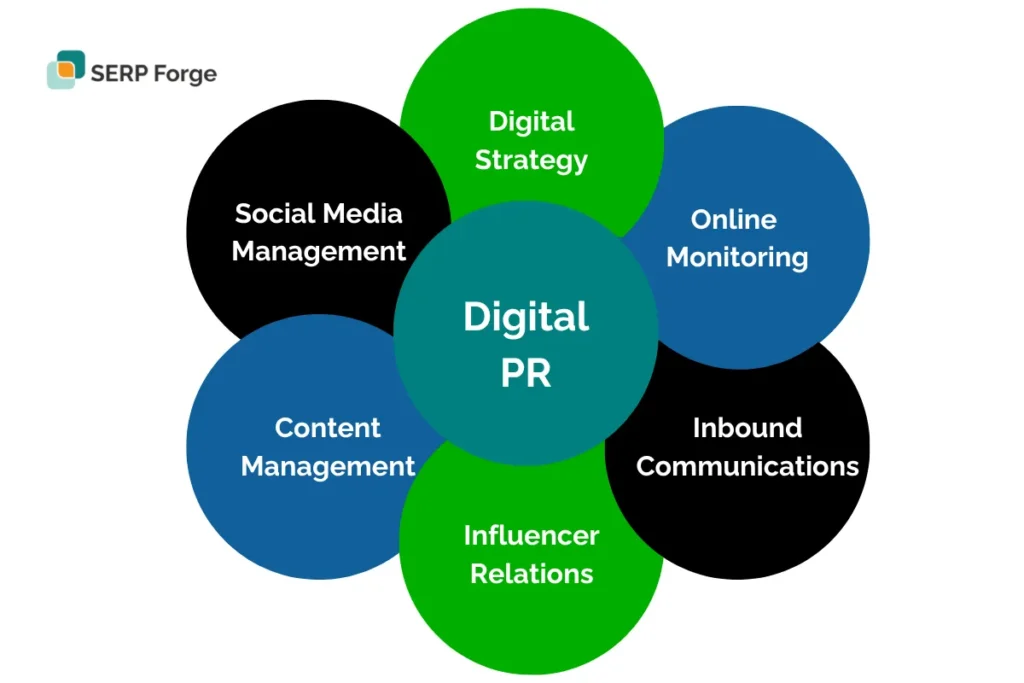
Did you know?
According to a study, only 17.7% of link builders use Digital PR to earn backlinks, making it one of the least used link-building tactics.
Unlike traditional PR, which focuses on brand awareness in print or TV, digital PR targets online platforms that can contribute to your SEO efforts.
💡 Pro tip: Backlinks from authoritative websites act as a “vote of confidence” in the eyes of search engines like Google, boosting your site’s credibility and ranking potential.
Why digital PR matters for SEO
Backlinks are one of Google’s top ranking factors. When reputable websites link to your content, search engines interpret it as a signal of trustworthiness and relevance.
Digital PR is now considered one of the best ways to build quality backlinks, especially with Google’s latest updates.
It’s interesting to see how link building is shifting more toward earning links through real coverage, pitching journalists, sharing expert insights, or creating newsworthy content.
Here’s why digital PR is crucial for SEO:
- High-quality backlinks: Links from authoritative sources carry more weight than low-quality backlinks.
- Increased organic traffic: Links from relevant sites bring visitors who are already interested in your niche.
- Brand visibility: Digital PR campaigns can put your brand in front of a wider audience.
- Improved domain authority: Consistent backlinks from reputable sources boost your domain authority over time.
Looking to amplify your SEO with genuine coverage and authoritative mentions? Our Digital PR services can help your brand earn attention, build trust, and grow organically. Reach out to explore how.
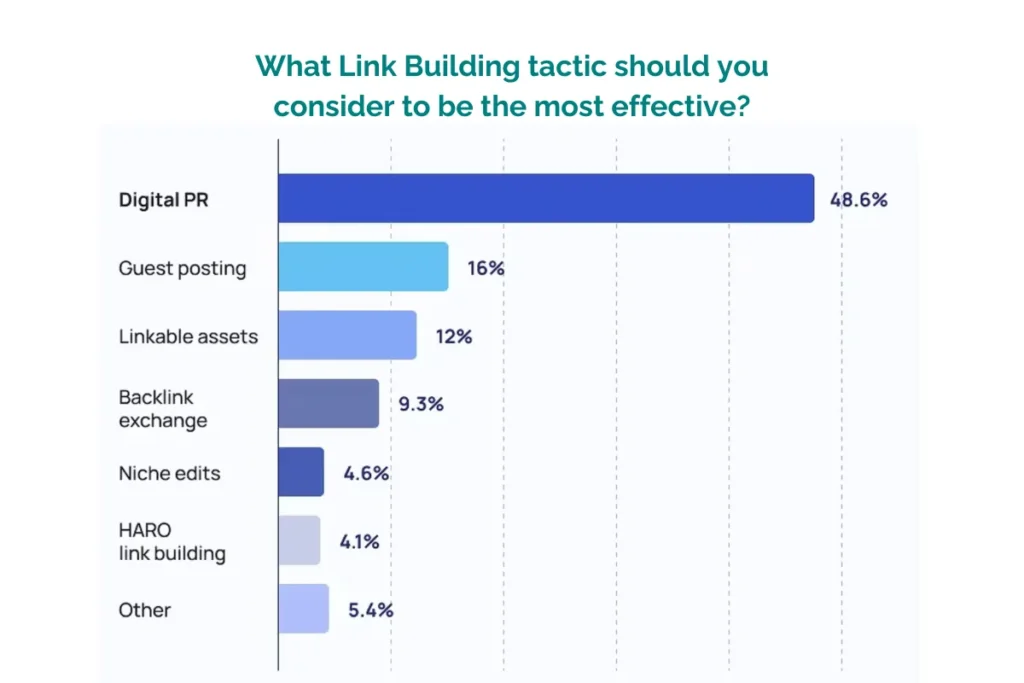
Key differences between traditional PR and digital PR
Public relations (PR) has always been about building trust and reputation. However, the way brands communicate and gain visibility has changed drastically over the years.
While traditional PR relied heavily on print, television, and radio, digital PR uses online channels to reach audiences instantly and measurably.
Both have the same end goal, building credibility and awareness, but they operate very differently in strategy, execution, and impact.
Here’s a detailed look at how they compare:
| Feature | Traditional PR | Digital PR |
| Medium | Relies on newspapers, magazines, television, and radio. | Focuses on online platforms such as blogs, digital publications, podcasts, and social media. |
| Focus | Aims at public awareness, press mentions, and brand storytelling. | Centers around earning backlinks, improving SEO rankings, and building online authority. |
| Measurability | ROI is difficult to track; success depends on estimated readership or broadcast reach. | Easily measurable through backlinks, referral traffic, engagement rates, and search visibility. |
| Speed & Reach | Slow process with limited distribution channels; often restricted by geography. | Instant global reach through digital news sites, influencer collaborations, and social sharing. |
| Audience Targeting | Broad targeting through mass media; less personalized messaging. | Highly targeted campaigns customized to audience interests, demographics, and search intent. |
| Content Format | Press releases, newspaper articles, and TV interviews. | Online articles, infographics, videos, social posts, podcasts, and data-driven reports. |
| Cost | It can be expensive due to print space or broadcast airtime. | More cost-effective; focuses on outreach, content creation, and relationship building. |
| Longevity of Coverage | Short-term visibility once it’s off-air or off the page, it’s gone. | Long-term visibility of digital content stays indexed and continues to attract traffic and backlinks. |
| Interactivity | One-way communication; limited audience feedback. | Two-way engagement through comments, shares, and community interactions. |
| SEO Value | No direct SEO benefit; coverage doesn’t contribute to search rankings. | Directly supports SEO by earning quality backlinks and improving domain authority. |
| Data & Analytics | Relies on traditional metrics like circulation, impressions, or Nielsen ratings. | Data-rich insights through analytics tools to measure reach, conversions, and engagement. |
Benefits of Digital PR Link Building
Digital PR link building goes beyond just earning backlinks; it’s about building a reputation, gaining credibility, and creating meaningful relationships with media outlets and online audiences.
As part of this process, link reclamation plays an important role. It involves finding lost or broken backlinks and reconnecting with the original publishers to have them restored so you don’t lose out on valuable authority.
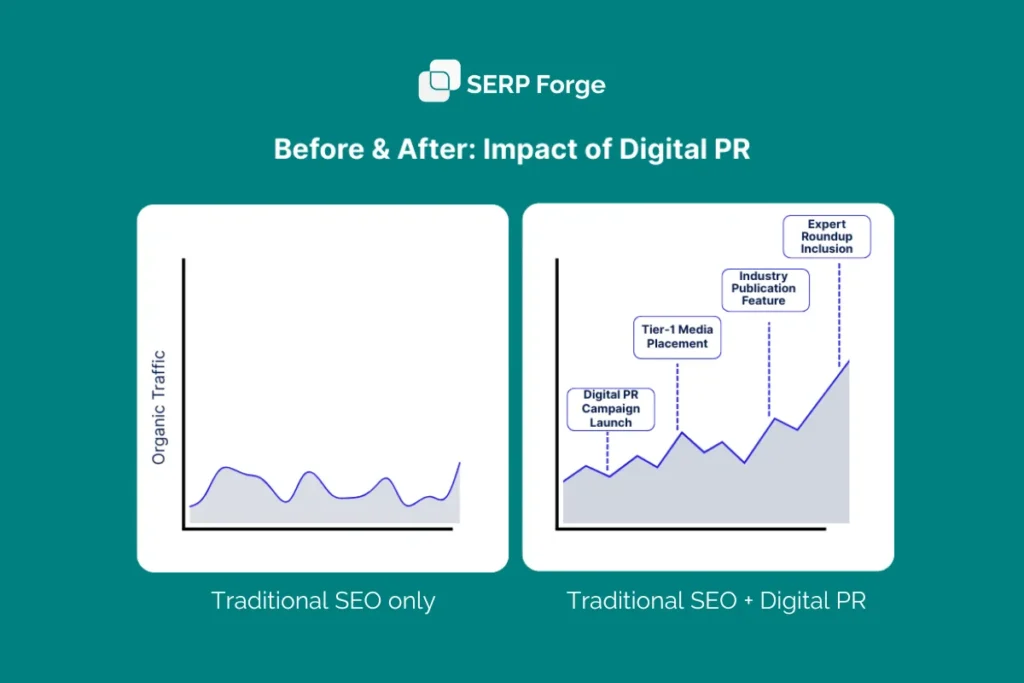
Let’s explore the top benefits in detail:
1. Earn high-quality backlinks that boost SEO
Backlinks remain one of Google’s top ranking factors, and digital PR helps you earn them naturally from authoritative sources such as media outlets, niche blogs, and online magazines.
Instead of buying or chasing low-quality directories, digital PR earns editorial links that come from real stories and valuable content.
Example: Helping Giverly Make Headlines on Business Standard
We helped Giverly spread the word about its prepaid card by securing a feature on Business Standard. The coverage showcased their fresh approach to charitable giving, making it easier for people to discover how the platform supports meaningful causes.
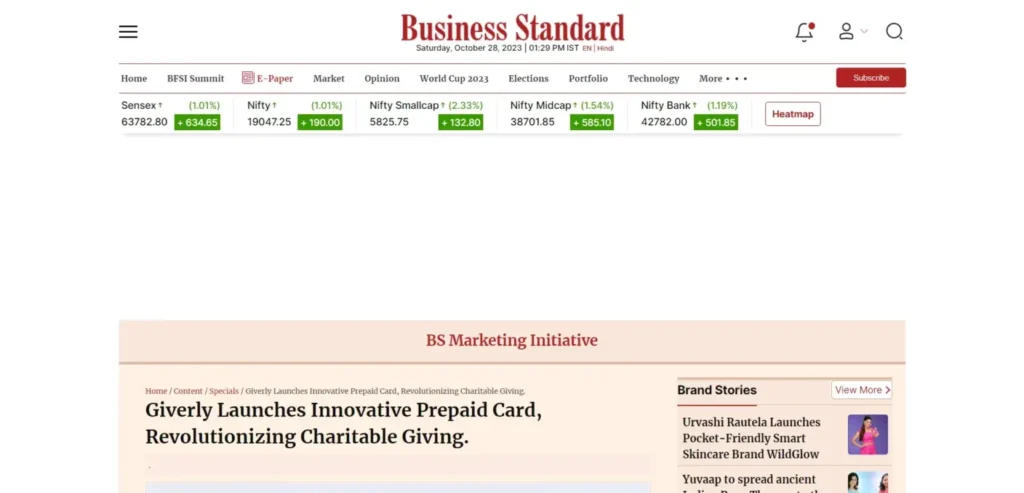
These backlinks send strong signals to Google that your website is trustworthy and credible.
Expert insight:
According to research, Digital PR link building becomes 433% more common among link builders as they gain more experience.
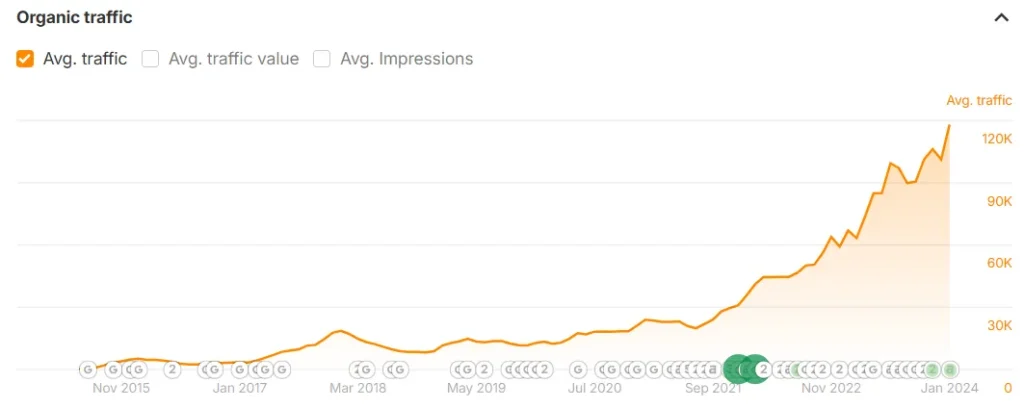
Focus on earning links from top-tier publications in your niche (like Forbes, TechCrunch, or HubSpot Blog) rather than pursuing volume. Quality always outweighs quantity in link building.
2. Boost brand awareness across multiple channels
Digital PR campaigns help your brand reach audiences who may never have discovered you through search alone.
Whether it’s being featured in an industry roundup, a product comparison, or a thought leadership article, your brand visibility multiplies across channels. Sharing your content strategically can also earn valuable social backlinks, further expanding your reach.
When your brand name appears on credible platforms, it enhances recognition and builds trust. Readers start associating your name with authority, which strengthens your overall brand identity.
Stat check:
According to the report, 37% of journalists now rely more on data to guide their editorial strategy than they did last year.
Additionally, 48% said that PR professionals can make their work easier by providing useful data and research for their stories.
3. Increase referral traffic from trusted sources
Every time your business gets mentioned or linked in an article, it creates an opportunity for referral traffic.
Readers who come across your brand in a reputable publication are more likely to click through to learn more about you, leading to a steady stream of qualified visitors.
Unlike paid ads, referral traffic from digital PR is sustainable. The content stays live, continues to attract views, and drives visitors long after the initial outreach.
Example: When a SaaS company earns a link from a trusted publication like TechCrunch or Gartner, it often sees a sharp spike in traffic and product trials, showing how PR-driven links can boost both visibility and conversions.
4. Strengthen online authority and credibility
Digital PR positions your brand as a thought leader in your field. When credible platforms cite your content, research, or insights, it builds perceived authority among your audience and search engines notice too.
As part of this process, SEO backlink research helps you understand where your brand is already mentioned and where strong opportunities exist for new, high-quality links. Each meaningful backlink works like an endorsement.
Over time, consistent mentions across trustworthy publications strengthen your authority and make it easier to rank for competitive keywords.
5. Support and amplify content marketing efforts
Digital PR acts as the perfect amplifier for your content marketing strategy.
Instead of just publishing blog posts or reports, digital PR helps distribute them through the right media channels and influencers.
If you’ve produced an in-depth industry report, data study, or infographic, PR outreach can get it featured on websites with large, engaged audiences. This not only increases your content’s reach but also enhances its link-earning potential.
Combine your content marketing campaigns with PR outreach every time you release something unique (like a trend report, survey, or tool). Journalists love fresh data and expert insights that add value to their stories.
6. Build relationships with journalists and industry influencers
One of the most overlooked benefits of digital PR is relationship building.
When you engage with journalists, bloggers, and editors regularly, you create long-term connections that open doors to future media coverage opportunities.
These relationships can lead to repeat mentions, collaborations, and invitations for guest columns or expert commentary. Over time, your brand becomes a go-to resource for insights in your industry.
Fact: Muck Rack’s State of Journalism Report revealed that even though 46% of journalists receive more than six pitches a day, nearly half (49%) rarely or never respond, mostly because the pitches aren’t relevant.
Still, 70% agree that PR professionals play a moderate to significant role in their success.
Types of digital PR campaigns
Digital PR campaigns can take several forms depending on your goals, audience, and content type. Here are the most common types:
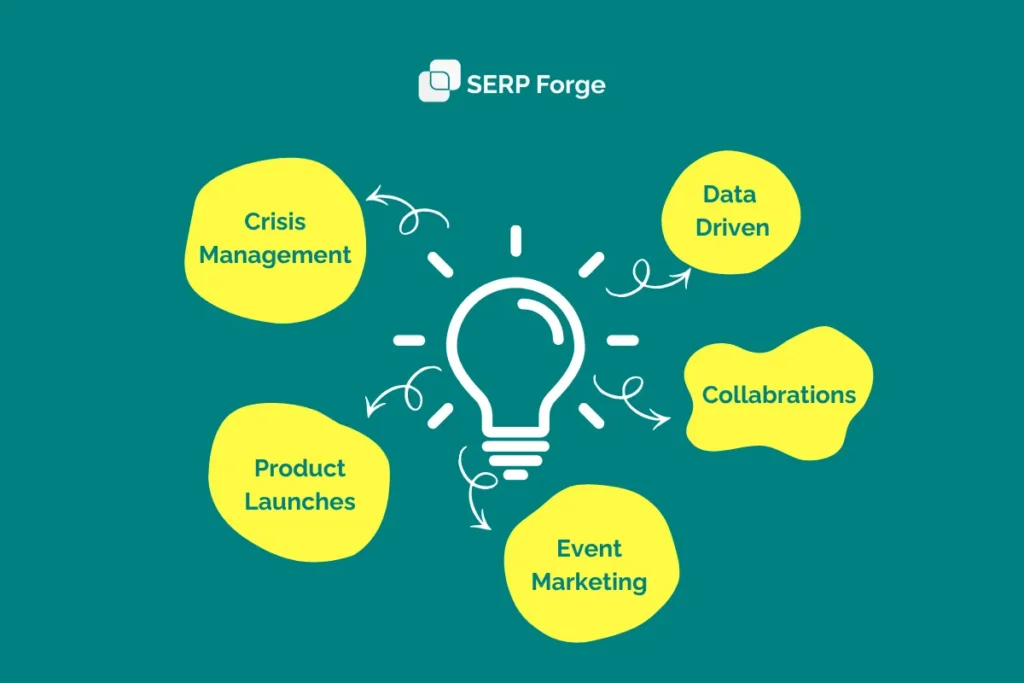
1. Data-driven campaigns: Press releases, online articles, and data-driven reports are still widely used. A well-structured press release submission can help secure timely coverage and attract authoritative backlinks.
2. Content collaborations: Work with bloggers, influencers, or industry experts on guest posts, roundups, or co-created content to expand reach and authority.
3. Product launch announcements: Publicize new products, features, or updates in a newsworthy way to gain media coverage and relevant links.
4. Event-based PR: Organize webinars, online events, contests, or workshops that generate buzz, engagement, and media mentions.
5. Crisis or reputation management: Address negative press or issues proactively, while turning the situation into opportunities for authoritative mentions and brand credibility.
💡 Pro Tip: Choosing the right type of campaign depends on your objective, whether it’s backlinks, brand awareness, or audience engagement.
Steps to create a digital PR link-building strategy
Building a successful digital PR link-building strategy requires a well-structured plan that combines creativity, data, and relationship building.
Let’s break down the process step by step so you can create campaigns that attract real attention and earn links that strengthen your SEO.
Step 1: Set clear goals
Before launching any digital PR campaign, start with clear and measurable goals. Without defined objectives, it’s difficult to evaluate success or adjust your approach later.
Ask yourself what you want to achieve through your digital PR efforts:
- High-quality backlinks: Do you want to earn links from top-tier publications or niche industry blogs?
- Increased website traffic: Are you focusing on driving referral traffic through media coverage?
- Brand mentions in top publications: Do you want journalists and editors to cite your brand as a source?
- Enhanced online authority: Is your aim to build credibility and position your brand as a trusted expert?
💡 Pro tip: Use the SMART framework Specific, Measurable, Achievable, Relevant, and Time-bound to define your goals.
For instance, instead of “get more backlinks,” set a goal like “earn 20 backlinks from websites with a Domain Rating (DR) of 60+ within three months.”
Step 2: Identify your target audience
Once your goals are clear, the next step is identifying who you want to reach.
Your audience goes beyond customers; it includes journalists, bloggers, influencers, editors, and thought leaders who can amplify your story.
Here’s how to define your target audience effectively:
- Segment by role: Are you targeting tech journalists, lifestyle bloggers, or SaaS publication editors?
- Understand their interests: Research the type of stories they usually cover.
- Check audience overlap: Look for publications your target customers already read or trust.
For example, a SaaS company could target B2B tech journalists from outlets like TechCrunch or Business Insider, while an eCommerce brand might focus on lifestyle or product review blogs.
The more specific your targeting, the higher your chances of building relationships and earning valuable backlinks.
💬 Example: If you’re promoting a sustainability report, reach out to environmental news outlets, green lifestyle bloggers, and eco-conscious influencers who genuinely care about the topic.
Step 3: Research Link Opportunities
Research is at the heart of every effective digital PR strategy. You need to find credible websites, blogs, and journalists who can help amplify your content.
Here’s how to uncover valuable link opportunities:
1. Use SEO tools:
Tools like Ahrefs can show which websites link to your competitors. Analyze these backlinks to identify relevant domains that might be open to featuring your content.
2. Study competitor campaigns:
Check what type of stories or press releases earned your competitors’ backlinks. This gives you inspiration for your own campaign themes.
3. Explore media databases:
Platforms like Muck Rack or Cision help find journalists covering specific beats or industries.
Using media databases helps you quickly find journalists and editors who cover your industry, making your outreach more targeted and effective.
4. Track trending topics:
Use Google Trends, Reddit, or Twitter/X to spot what’s newsworthy. Aligning your campaign with current events increases your chances of coverage.
💡 Pro tip: Prioritize websites with high domain authority (DA 50+) and those that are contextually relevant to your niche. Relevance is often more valuable than raw authority.
Step 4: Create newsworthy content
No amount of outreach can succeed if your content isn’t worth sharing. The foundation of every digital PR campaign is content that’s unique, credible, and engaging.
Here are proven types of content that attract backlinks and media mentions:
Original research or surveys:
Conduct research within your industry and publish the results. Data-backed insights are gold for journalists.
Example: A fintech company could survey 1,000 small businesses on digital payment adoption and pitch the findings to financial news outlets.
Infographics and visual assets:
Visuals simplify complex information, making it highly shareable. Create well-designed infographics summarizing your data or trends.
Thought leadership articles:
Share expert opinions or predictions about industry trends. This positions your brand as a credible voice.
Interactive tools or calculators:
Create tools that solve a real problem, like ROI calculators, quizzes, or checklists that naturally earn links as people share them.
In short, Journalists love stories with a human or emotional angle. Combine solid data with relatable narratives to make your content both informative and engaging.
Step 5: Outreach and promotion
Once your content is ready, it’s time to share it with the right people. This is where relationship-building plays a crucial role.
Effective email outreach is crucial for getting journalists and influencers to notice your story. Personalized pitches that highlight value and relevance can significantly improve coverage and the number of backlinks earned.
Here’s how to approach effective outreach:
1. Personalize every email:
Mention the journalist’s name, reference one of their recent articles, and explain why your story would interest their readers.
2. Keep it short and clear:
Journalists receive hundreds of emails daily. Keep your pitch concise, ideally under 150 words and focus on the key takeaway.
3. Highlight value:
Instead of saying “Please link to my article,” say “We’ve published new data that reveals how 68% of small businesses are shifting to remote-first tools, which could add depth to your recent story on digital transformation.”
4. Include supporting materials:
Attach visuals, data highlights, or press kits if available. Make it easy for them to cover your story.
5. Follow up politely:
If you don’t receive a response within 5–7 days, send one follow-up email. Avoid being pushy, just gently remind them of the potential value.
💡 Pro tip: Use tools like Hunter.io or BuzzStream to find verified journalist contacts and track email responses efficiently.
Step 6: Monitor and measure
Your job doesn’t end after the campaign goes live. Monitoring and analyzing performance is essential for understanding what worked and what can be improved next time.
Here’s what to track:
Number of backlinks acquired: Use Ahrefs or Google Search Console to see how many sites linked to your campaign. Focus on links from high-authority and relevant domains.
Referral traffic: Check your analytics to measure how much traffic came from media placements or linked articles.
Media mentions: Use tools like Google Alerts, Mention, or Brand24 to track where your brand is being discussed.
Domain authority improvement: Track domain growth over time using Moz or Ahrefs metrics. Consistent link-building should gradually raise your DA and improve keyword rankings.
💬 Example: A travel brand’s “2025 Most Visited Destinations” report could earn 30 backlinks and 5,000 referral visits within a month, metrics that show the campaign’s impact on both visibility and traffic.
Keep a shared dashboard to record your campaign performance. Over time, this data will help refine future PR strategies and outreach approaches.
How to find link opportunities using Ahrefs
Ahrefs is one of the most powerful tools for discovering high-quality link-building opportunities.
While auditing backlinks, also keep an eye out for unnatural links that may harm your SEO. Disavowing or addressing these links ensures your domain remains healthy and preserves the SEO benefits of your digital PR efforts.
Here’s how you can use it effectively for your digital PR campaigns:
Step 1: Analyze competitor backlinks
- Go to Ahrefs → Site Explorer and enter your competitor’s domain.
- Click on the “Backlinks” tab to see all websites linking to them.
- Sort by Domain Rating (DR) to identify high-authority sources.
- Export the list and highlight sites that have covered similar topics or brands.
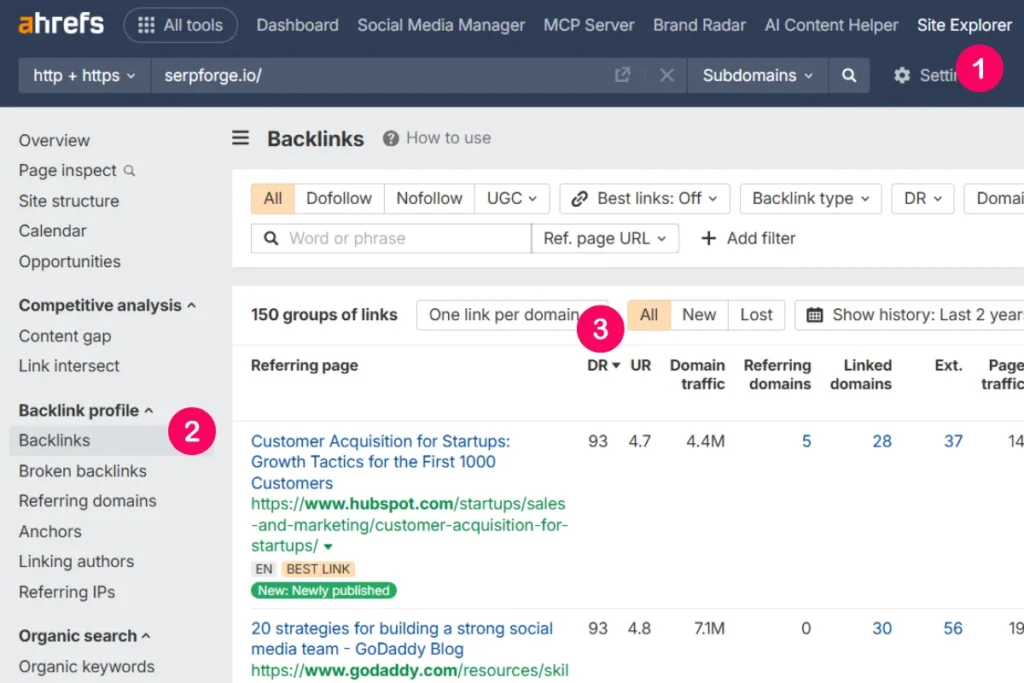
Step 2: Find linkable content ideas
- Use the “Best by Links” report to discover which pages on your competitors’ sites attract the most backlinks.
- Analyze their content type data, studies, guides, or infographics to understand what journalists and bloggers link to most often.

Step 3: Identify broken or lost links
- Go to “Broken Backlinks” in Ahrefs to find sites linking to competitors’ non-working pages.
- Reach out to those websites and suggest replacing the broken link with your relevant, active content.
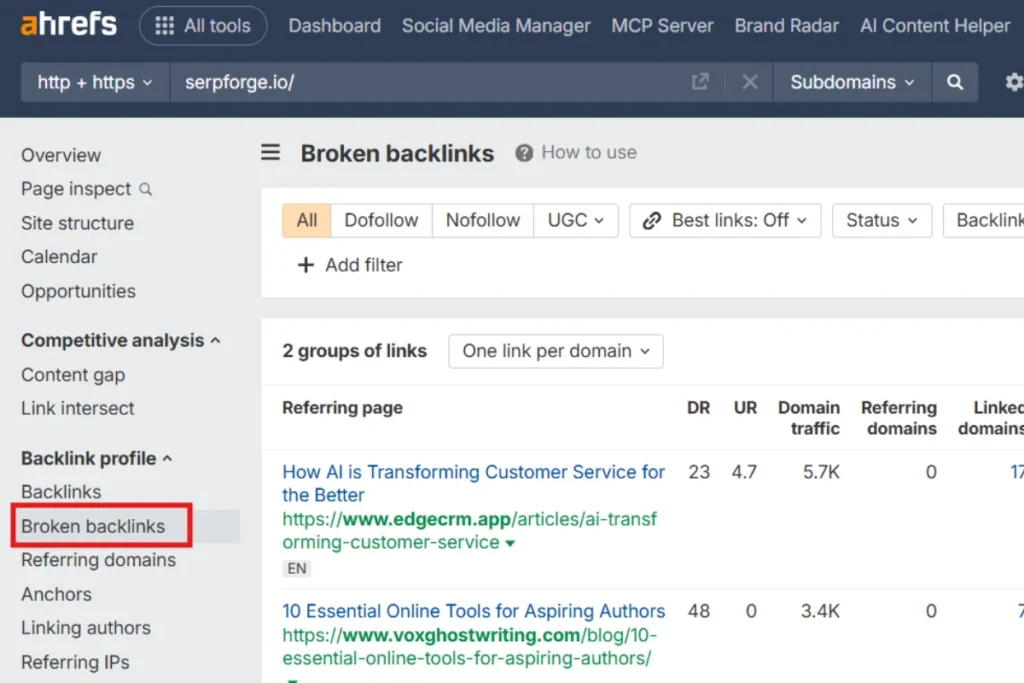
Step 4: Track brand mentions without links
- Use the Content Explorer feature to search your brand name in quotation marks (“Your Brand”).
- Filter results to show only pages that mention you but don’t link.
- Contact those publishers and request a link addition.

Step 5: Discover guest posting opportunities
- In Content Explorer, search for niche-specific keywords like “Digital PR trends” or “SEO case study.”
- Filter by Domain Rating (DR 40+) and one article per domain to find quality blogs that publish similar content.
- Pitch guest post ideas that align with their audience.
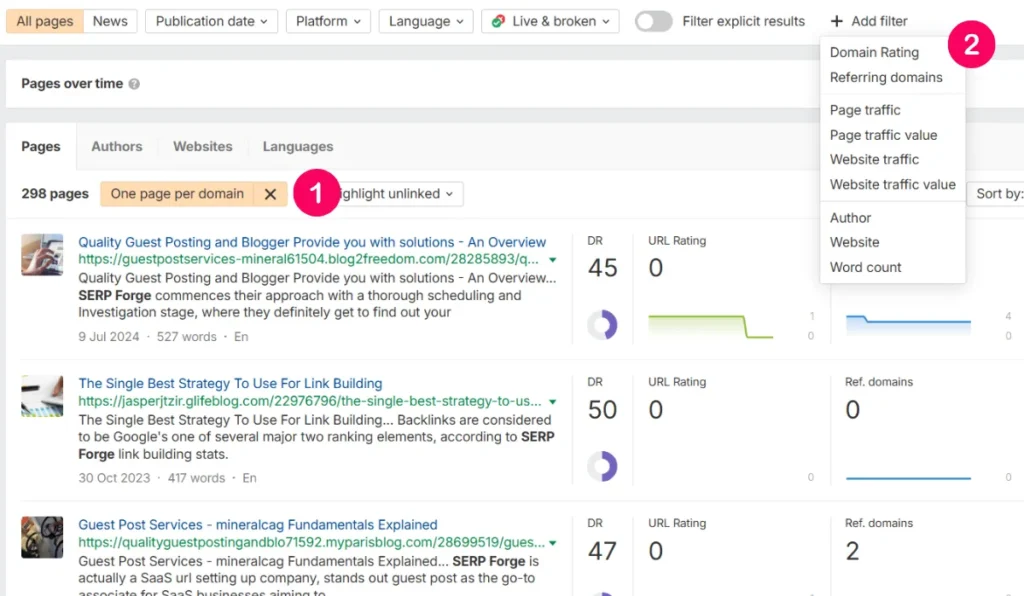
💡 Pro tip: Combine these Ahrefs reports to build a link prospect list, categorize sites by authority and relevance, and personalize your outreach for higher success rates.
Conclusion
Digital PR link building is not just a trend; it’s a vital component of modern SEO strategy. By combining creativity, research, and outreach, brands can earn high-quality backlinks, boost organic traffic, and establish authority in their niche.
Investing time and effort in digital PR today can yield long-term benefits for your website’s visibility and online credibility.
Want to get your brand featured on top publications and boost your online authority? Contact us to learn more about our Digital PR services and how we can help your story reach the right audience.
FAQ’s about Digital PR link building
What exactly is Digital PR link building, and how does it differ from traditional link building?
Digital PR link building focuses on earning high-quality backlinks by promoting your brand, content, or data-driven stories to credible online publications and journalists. Unlike traditional link-building tactics, which often rely on low-quality directories or mass outreach, Digital PR emphasizes real coverage, authoritative mentions, and measurable SEO benefits.
How does Digital PR link building improve my website’s SEO?
When reputable websites link to your content, search engines interpret these backlinks as a vote of trust. Digital PR not only helps earn high-quality backlinks but also increases brand visibility, referral traffic, and domain authority, all of which positively impact search rankings over time.
What types of content work best for Digital PR campaigns?
Content that is original, newsworthy, and highly shareable performs best. This includes data-driven research, industry surveys, infographics, interactive tools, thought leadership articles, and trend reports. Journalists and bloggers prefer content that adds real value and is easy to reference.
How do I find the right websites and journalists for my Digital PR outreach?
Start with SEO backlink research and competitor analysis using tools like Ahrefs. Identify high-authority sites that link to similar content, explore media databases like Muck Rack, and track trending topics to align your outreach. Targeted, personalized pitches are more likely to earn coverage and links.
Can Digital PR link building provide long-term benefits for my brand?
Yes. Unlike paid ads or short-term campaigns, digital PR builds lasting credibility and authority. High-quality backlinks continue to drive referral traffic, improve SEO rankings, and strengthen brand reputation, making it a sustainable strategy for long-term online growth.




